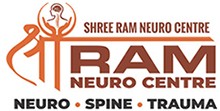Transforaminal Percutaneous Endoscopic Discectomy has gained more preference over time because of the advantages it offers in the form of a shorter rehabilitation period, reduced blood loss, trauma, and scar tissue compared to conventional procedures. The pre-requisite it asks for is neurosurgeon should have experience and capability of beating and handling the challenges that one may encounter during or after the surgery. Bone Spine and joint clinic have expert neurosurgeons fulfilling the demands and requirements of this challenging yet effective procedure Transforaminal Percutaneous Endoscopic Discectomy for treating herniated lumbar disc and many other spinal dysfunctionalities. Techniques while performing the surgery need to be accurate and precise for fruitful results. The first challenge comes in deciding the position and approach for surgery that surgeons do according to the location of disc herniation. More crucial than the first step is inserting and exiting the spinal root, wherein no nerve should get damaged or disturbed. The process makes use of local anesthesia which, allows doctors to monitor changes in symptoms of the patient. Giving pain-relieving medicines before the needle insertion into the skin allows the distinction between pathological and other disc tissues facilitating the completion of the entire procedure of removal of epidurally extruded disc fragments in the lumbar spine.
Book an Ambulance
ਐਂਬੂਲੈਂਸ ਬੁੱਕ ਕਰੋ
Book an Appointment
ਮੁਲਾਕਾਤ ਬੁੱਕ ਕਰੋ

